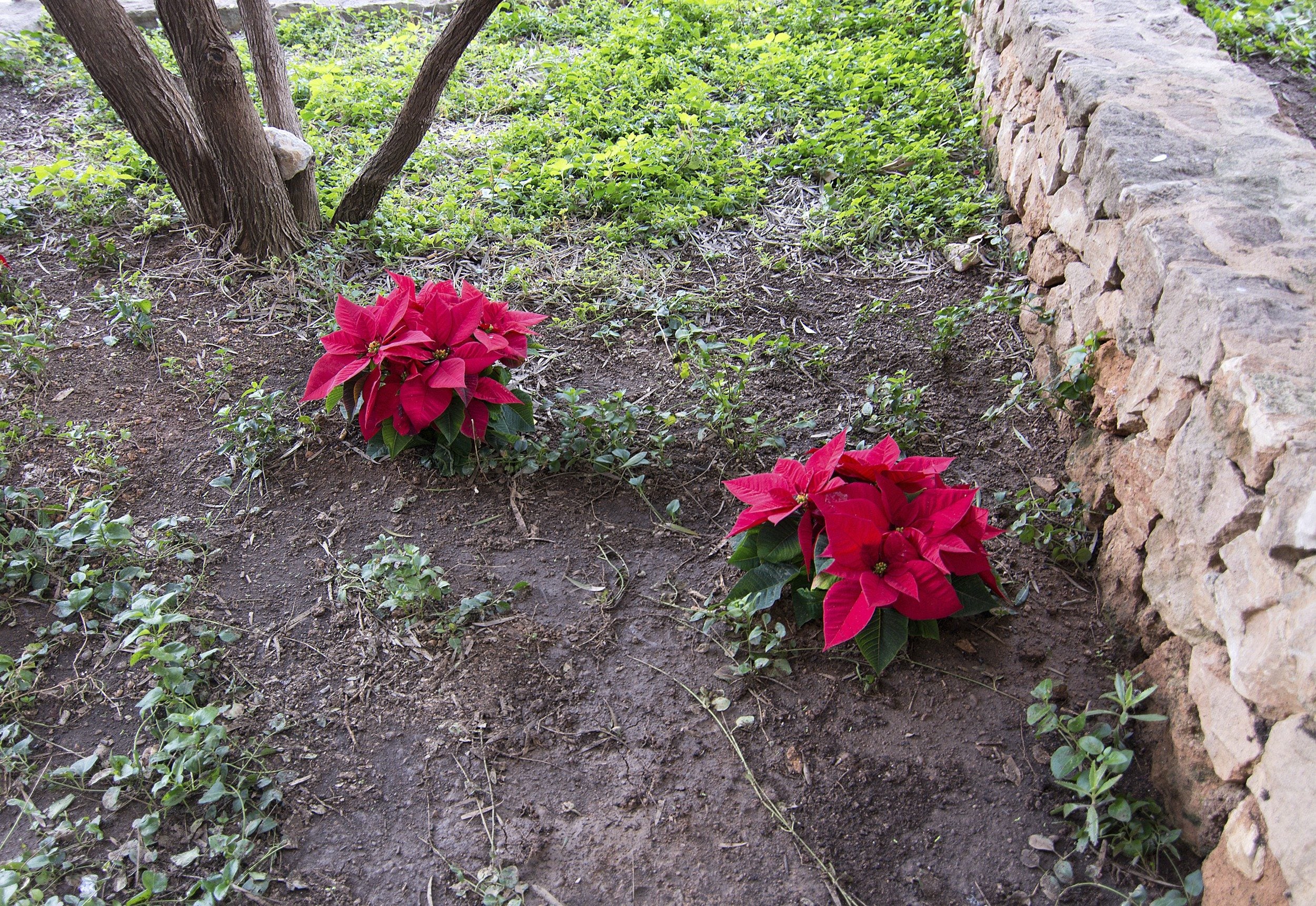Can Poinsettias Grow Outside – Caring For Outdoor Poinsettia Plants


Many Americans only see poinsettia plants when they are wrapped in tinsel on the holiday table. If that’s your experience, it’s time you learned about growing poinsettia plants outside. If you live in U.S. Department of Agriculture plant hardiness zones 10 through 12, you can begin poinsettia care outdoors. Just be sure that cold temperatures in your area don’t drop below 45 degrees F (7 C).
Can Poinsettias Grow Outdoors?
Can poinsettias grow outdoors? How? Yes. In the right climate and with the right planting location and care, these bright Christmas favorites can shoot up to 10 foot (3 m.) shrubs in rapid order.
If it’s your potted holiday plant that makes you ask about planting poinsettia outdoors, you have to start treating the plant well from the moment it arrives. Water your potted poinsettia when the soil starts getting dry and place it in a sunny location in your home, protected from air currents.
Growing Poinsettia Plants Outside
When you start planting poinsettia outdoors, you’ll have to find a location with similar attributes. Poinsettia plants outdoors must have a sunny corner to call home, somewhere protected from harsh winds that can damage them quickly.
When you are growing poinsettia plants outside, choose a spot with slightly acidic, well-draining soil. Be sure it drains well to avoid root rot. Don’t transplant poinsettia plants outdoors right after Christmas. Once all of the leaves have died back, prune the bushes back to two buds and keep it in a bright location. You can start planting poinsettia outdoors after all chance of frost has passed.
Caring for Outdoor Poinsettia Plants
Caring for outdoor poinsettia plants is not very time consuming or intricate. Once you see green shoots in spring, start a regular watering and feeding program. If you opt to use water soluble fertilizer, add it to the watering can every other week. Alternatively, use slow release pellets in spring.
Poinsettia plants outdoors tend to grow tall and leggy. Prevent this by regular trimming. Pinching back the tips of new growth creates a bushier plant, but the bracts themselves are smaller.
Sign up for the Gardening Know How newsletter today and receive a free copy of our e-book "How to Grow Delicious Tomatoes".

Teo Spengler is a master gardener and a docent at the San Francisco Botanical Garden, where she hosts public tours. She has studied horticulture and written about nature, trees, plants, and gardening for more than two decades, following a career as an attorney and legal writer. Her extended family includes some 30 houseplants and hundreds of outdoor plants, including 250 trees, which are her main passion. Spengler currently splits her life between San Francisco and the French Basque Country, though she was raised in Alaska, giving her experience of gardening in a range of climates.